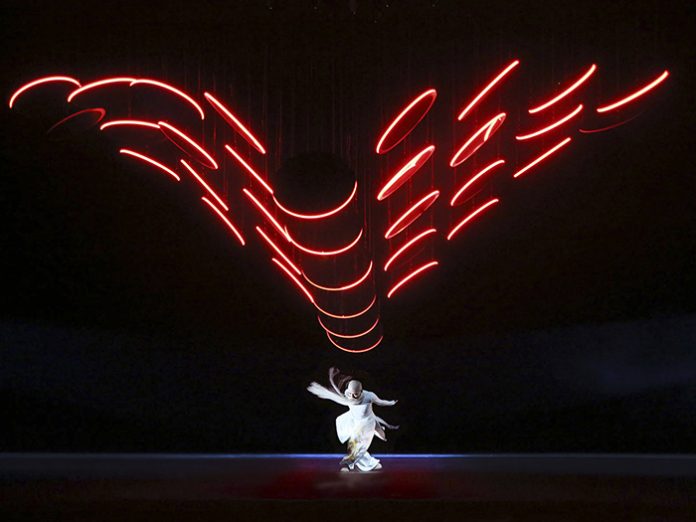Mirror-Mirror, a dynamic kinetic installation created by German lighting /visual artist Christopher Bauder of WHITEvoid, is set to tour China in August 2018, complete with stunning lighting.
For Mirror-Mirror, Bauder utilised 30 Robe Pointes as his primary light sources, which worked in unison with 102 KINETIC LIGHTS WinchLEDpixels and 34 Mirror Disc lighting fixtures.
Each mirror is controlled by 3 winches which give 7 metres of up/down plus pan/tilt, so they can move incredibly smoothly on XY and Z axes making their movement fluid and three dimensional. The mirror movement is controlled via ArtNet by Kinetic Lights’ proprietary KLC software platform and the whole system is networked.
Robe Pointes are arranged on ladders in three layers, each with 5 Robe Pointes, run upstage/downstage. Utilizing these traditional dance performance lifting positions was one thing, but the technique was fully subverted with the mirrors which were able to bend, reflect and refract the light beams in any direction in mid-air.
Combining the side-rigged Pointes with the moving mirrors massively increased the flexibility of the precisely positioned lighting fixtures. Bauder first worked with Zhang Yimou on Weaving Machine another large-scale kinetic installation that was staged as 1 of the 8 sections in Apologue Part 1, presented a year ago in the same venue. This involved 640 internally lit balls on the same winch system and a solo female dancer, Rose Alice from London.
Bending and reflecting the lighting in this way with the mirrors is something he has crafted over a number of installations, notably earlier this year in SKALAR at Kraftwerk in Berlin, a cathedral-like former power station that provided an imposing industrial setting.
SKALAR was lit with 90 Robe Pointes in conjunction with 65 double-sided mirrors, each with a perimeter ring of 180 addressable pixels, suspended on 195 of the WinchLEDpixels.
Bauder noted: “In addition to the accuracy of the lighting cues we needed a light with highly calibrated colours that matched perfectly. It had to be a quick moving fixture easy to handle and programme … and also readily available. This and the crispness of the emitted light made it perfect for the installation”.
DMX from the Pointes was converted from ArtNet and integrated into the computer running KINETIC LIGHTS’ proprietary KLC software where Bauder and his team programmed the lighting looks and scenes as well as all the mirror movements.
The luminaires were supplied by German rental company MOTION on a dry hire basis and will also be on the tour which visits Tianjin, Xi’an and Nanjing in August.






